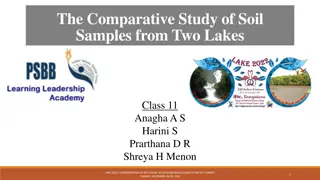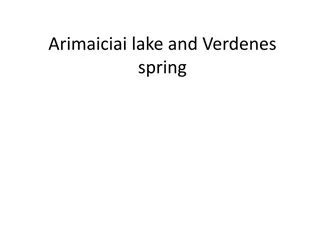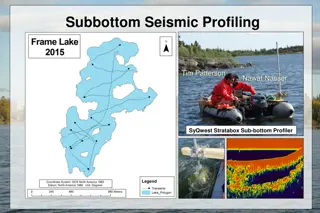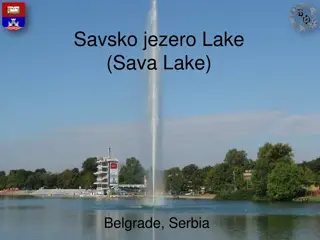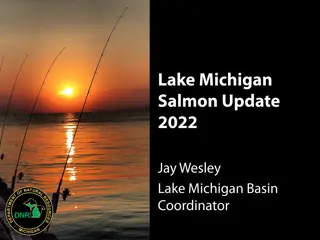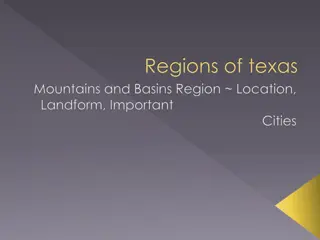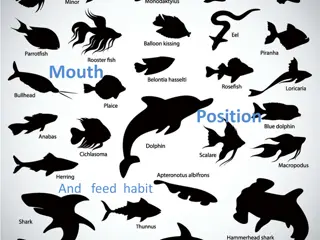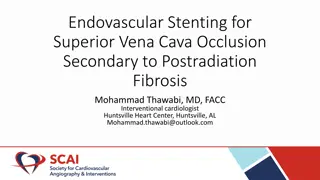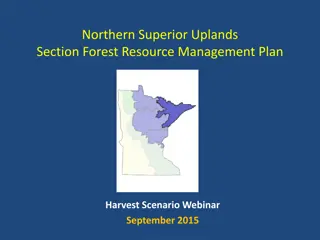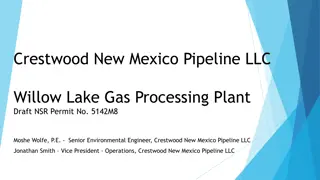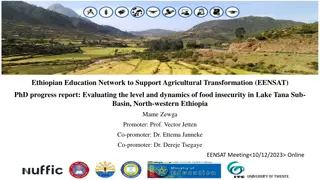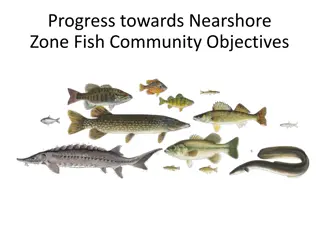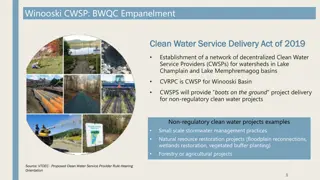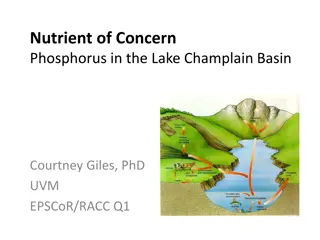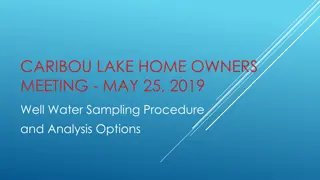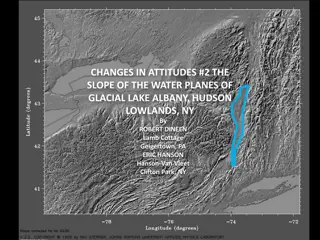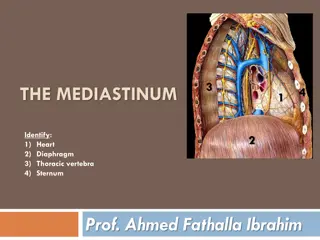Understanding Paleoweathering of Paleosols in the Lake Superior Region
Explore the localities and ages of Paleoproterozoic granitic paleosols in the Lake Superior region through schematic profiles, A-C*N-K plots, compositional changes in saprolite relative to protolith, variation with depth, reconstruction of CIA and K2O in metasomatized samples, and mass balance equations. Discover the evolution of paleoweathering processes and the impact on regolith formation over time.
Download Presentation

Please find below an Image/Link to download the presentation.
The content on the website is provided AS IS for your information and personal use only. It may not be sold, licensed, or shared on other websites without obtaining consent from the author. Download presentation by click this link. If you encounter any issues during the download, it is possible that the publisher has removed the file from their server.
E N D
Presentation Transcript
Localities and Ages of Paleoproterozoic Granitic Paleosols In the Lake Superior Region (map courtesy of Mark Jirsa)
Schematic Paleoweathering Profile regolith saprolite protolith
The A-C*N-K Plot (molar) modern tropical weathering profile protolith Chemical Index of Alteration (CIA) CIA = 100 molar Al2O3/(Al2O3+CaO*+Na2O+K2O)
A-C*N-K Plots for Six Precambrian Paleosols all saprolites are displaced from the weathering vectors Potassium Metasomatism !! 1740 Ma 1460 Ma (11) saprolite protolith
Compositional Changes in Saprolite Relative to Protolith % change in saprolite = 100 [(cj,s/cj,p)/(ci,s/ci,p) 1] where cj,s = concentration of oxide j in saprolite cj,p = concentration of oxide j in protolith ci,s = concentration of immobile oxide in saprolite ci,p = concentration of immobile oxide in protolith Immobile candidates are Al, Ti, and Zr Al is chosen because it is a major constituent, and it has the lowest variation among the three elements !! A caveat: the protolith must be homogeneous !!
Compositional variation with depth % change relative to Al2O3 in protolith Pronto Si Ca Na K Depth, cm protolith Lauzon Bay Denison Ville Marie Depth, cm McGrath Baraboo
Reconstruction of CIA and K2O in Metasomatized Samples Pronto K2O:Al2O3 22:78 67.5 from C*N from K
Compositional variation with depth note KMEAS & KCALC % change relative to Al2O3 in protolith Pronto Ca Na KMEAS KCALC protolith Depth, cm Lauzon Bay Denison Ville Marie Depth, cm McGrath Baraboo
Mass Balance Equation Mj = pcj,p j,s(z) dz McGrath where: M = mass of oxide removed or added = density of protolith c = concentration of oxide in protolith = translocation of oxide in saaprolite z = depth Ca Na KMEAS KCALC protolith
Depths of Weathering and Mass Fluxes (Removal & Addition) Magnitude of Weathering = Total Mass Removed K2O2 mols cm-2 0.86 0.29 0.19 0.30 0.20 0.27 0.27 K2O3 mols cm-2 1.35 0.38 0.30 0.65 0.33 0.57 1.03 MW1 mols cm-2 6.3 2.7 2.6 8.1 2.4 5.1 5.6 Weathering Depth, m 13.4 >3.9 4.0 7.6 4.2 9.0 inferred Baraboo values Regolith Depth, m absent 0.9 absent absent absent 0.7 Locality Pronto (2450 Ma) Denison (2450) Lauzon Bay (2450) Ville Marie (2400) McGrath (2200) Baraboo (1700) 1 Magnitude of Weathering; mass removed by weathering (SiO2, CaO, Na2O, K2OCALC) 2 mass of K2O added by metasomatism, relative to protolith 3 mass of K2O added by metasomatism, relative to calculated weathering profile
removal of: SiO2 CaO Na2O K2OCALC Ville Marie Baraboo R2 = 0.53 Pronto MW and depth are a function of: rate of weathering rate of erosion duration of weathering Ville Marie Baraboo R2 = 0.97 Pronto
Magnitude of Weathering vs. Intensity of Weathering Plagioclase Index of Weathering PIW = 100 CNCALC / CNTOTAL where CNCALC is calculated mass flux of CaO and Na2O CNTOTAL is total removal of CaO and Na2O B boo inferred B boo calculated VM Feldspar Index of Weathering FIW = 100 CNKCALC / CNKTOTAL where CNKCALC is calculated mass flux of CaO, Na2O, and K2O CNKTOTAL is total removal of CaO, Na2O, and K2O Locality Pronto (2450 Ma) Denison (2450) Lauzon Bay (2450) Ville Marie (2400) McGrath (2200) Baraboo calculated Baraboo inferred PIW 81 69 62 96 77 93 93 FIW 63 65 50 68 47 79 93
Calculation of Atmospheric CO2 (Sheldon 2006) XO + 2CO2 + H2O = X2+ + 2HCO3- M/t pCO2 [(KCO2r)/103 + ( DCO2 )/L] M/t (molCO2/cm2 year): time-averaged flux of CO2 required for observed weathering pCO2 : partial pressure of atmospheric CO2 KCO2: Henry s Law constant for CO2 r : rainfall rate : a constant involving time and gas volume DCO2 : diffusion constant for CO2 in air : diffusion constant CO2 (soil)/diffusion constant CO2 (air) L : depth to the water table
Calculated pCO2 Relative to Pre-Industrial Atmospheric Level (280 ppm) for a weathering duration of 100,000 years pCO2 PIAL 33.7 6.5 5.3 30.4 5.1 17.8 19.0 Thickness meters Locality Pronto Denison - eroded?? Lauzon Bay - eroded?? Ville Marie McGrath - eroded?? Baraboo calculated Baraboo inferred 13.4 3.9 4.0 7.6 4.2 9.0 9.0
Calculated pCO2 Relative to Pre-Industrial Atmospheric Level (280 ppm) the effect of weathering duration
Conclusions K-metasomatism is a common phenomenon in Precambrian paleosols Despite such metasomatism, application of the A-C*N-K plot allows for calculation of minimum values of mass flux in paleoweathering profiles and minimum estimates of atmospheric pCO2 The Feldspar Index of Weathering (FIW) is an effective parameter for evaluating the proportion of total feldspar removed from an entire weathering profile, i.e. the intensity of weathering, and is useful in comparing the intensity of weathering among paleosols Among the investigated localities, the highest FIW value is found in the Baraboo paleosol, from which all feldspar was removed by weathering, accounting for the absence of feldspar in the overlying supermature Baraboo Quartzite




